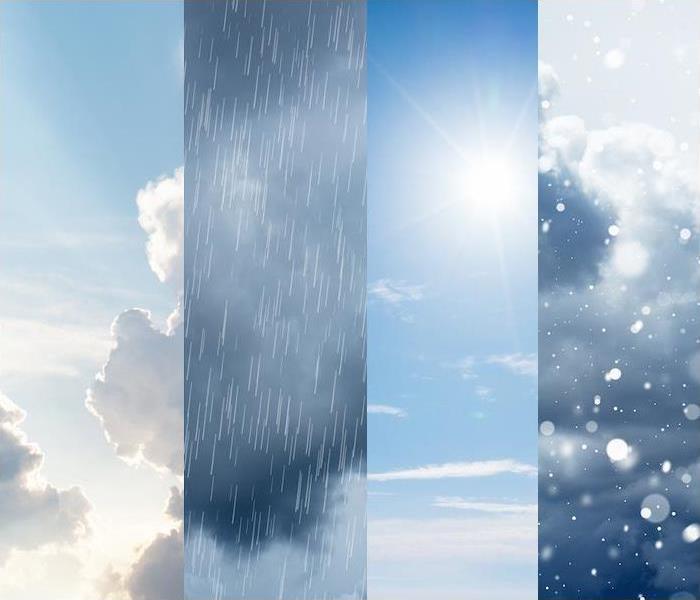Storms and Weather Hazards in the Spring
3/20/2022 (Permalink)
 Extreme temperature changes can lead to the possibility of severe weather. SERVPRO of Putnam County is a click away if you experience any damage.
Extreme temperature changes can lead to the possibility of severe weather. SERVPRO of Putnam County is a click away if you experience any damage.
The United States is one of the world’s largest countries, second only to Russia and Canada in overall size (but China is bigger if all outlying U.S. territories are excluded).
With such a large region under one cover, seasonal weather isn’t a monolith—various sections of the nation encounter distinct weather patterns, and hence different weather threats, to differing degrees.
As spring approaches and warm and cold air masses meet throughout the country, let’s take a look at what different weather phenomena may be anticipated in some important regions and especially what we need to be aware of here in New York.
During the spring months, the Pacific Northwest is prone to severe rain, which may create floods and water damage. Higher altitude areas will have snow, and the melting and runoff from that will pose issues of its own.
The Upper Midwest and Northeast regions, including here in New York, have the longest continuation of winter’s chill, and cold weather will hang on there fully throughout the season. Residents from Maine to the Dakotas can expect an extreme cold, and the possibility of snowstorms and blizzards until late spring or even early summer brings temperatures up.
Extreme precipitation events are expected to become more frequent and intense, possibly increasing the frequency and severity of floods. Heavier precipitation raises the likelihood of spring floods, which may be especially damaging to New York’s agricultural economy.
The southern West Coast, on the other hand, will have to be on the lookout for excessive heat waves that can endanger lives and safety, while the South Pacific, including Hawaii, will be on the lookout for possible tsunamis caused by tectonic activity.
Windstorms, derechos, and the potential of wildfires, which can readily spread when winds are strong and seasons are dry, will be a risk for the middle of the nation from Iowa to Texas. And, of course, part of this region is Tornado Alley, which has a high concentration of tornadoes.
Finally, the Southeast might see a variety of extreme weather, ranging from tornadoes and severe thunderstorms in landlocked areas to hazardous rip currents and early-season hurricanes later in the spring.
Extreme weather is a real hazard in the United States, regardless of where you reside. Yours may differ from a friend’s a few states away, but it’s always a good idea to be prepared.
If extreme weather leaves you with damage from water, fire, or other elements, help is a click away. Contact SERVPRO for fast, expert recovery.






 24/7 Emergency Service
24/7 Emergency Service